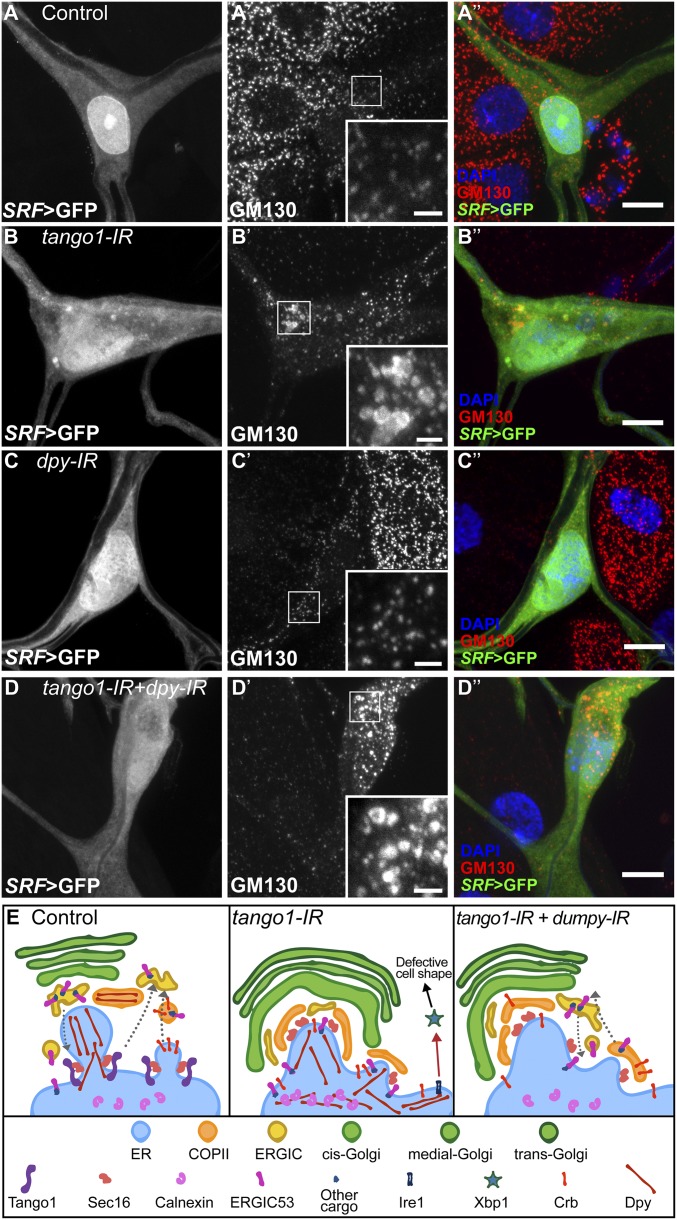Fig. 7.
Effect of loss of Tango1 and Dpy on GM130 distribution. (A–D) Terminal cells expressing GFP under SRF-gal4, and stained for the Golgi marker GM130 (A′–D′). In control (A–A″) and dpy-IR cells (C–C″), the distribution and size of GM130-labeled structures is homogeneous, whereas in tango1-IR cells, GM130 is seen in heterogeneous aggregates (B–B″). Knocking down dpy in tango1-IR cells does not rescue GM130 distribution (D–D″). Insets in A′–D′ are magnifications of representative regions, indicated by the white squares. (Scale bars: 10 μm; Insets, 2 μm.) (E) Model showing the role of Tango1 in Dpy trafficking and the indirect consequences of Dpy blockage. In the absence of Tango1, the structure of the ER, COPII, and Golgi apparatus are changed, ERGIC53 is retained in the ER, and the ER-stress response is activated. Additionally, neither Dpy nor Crb reach the plasma membrane. If Dpy levels are reduced, ERGIC53 shuttles out of the ER, the ER-stress response is no longer active and Crb can be secreted. However, the ER, COPII, and Golgi morphology are not restored.

